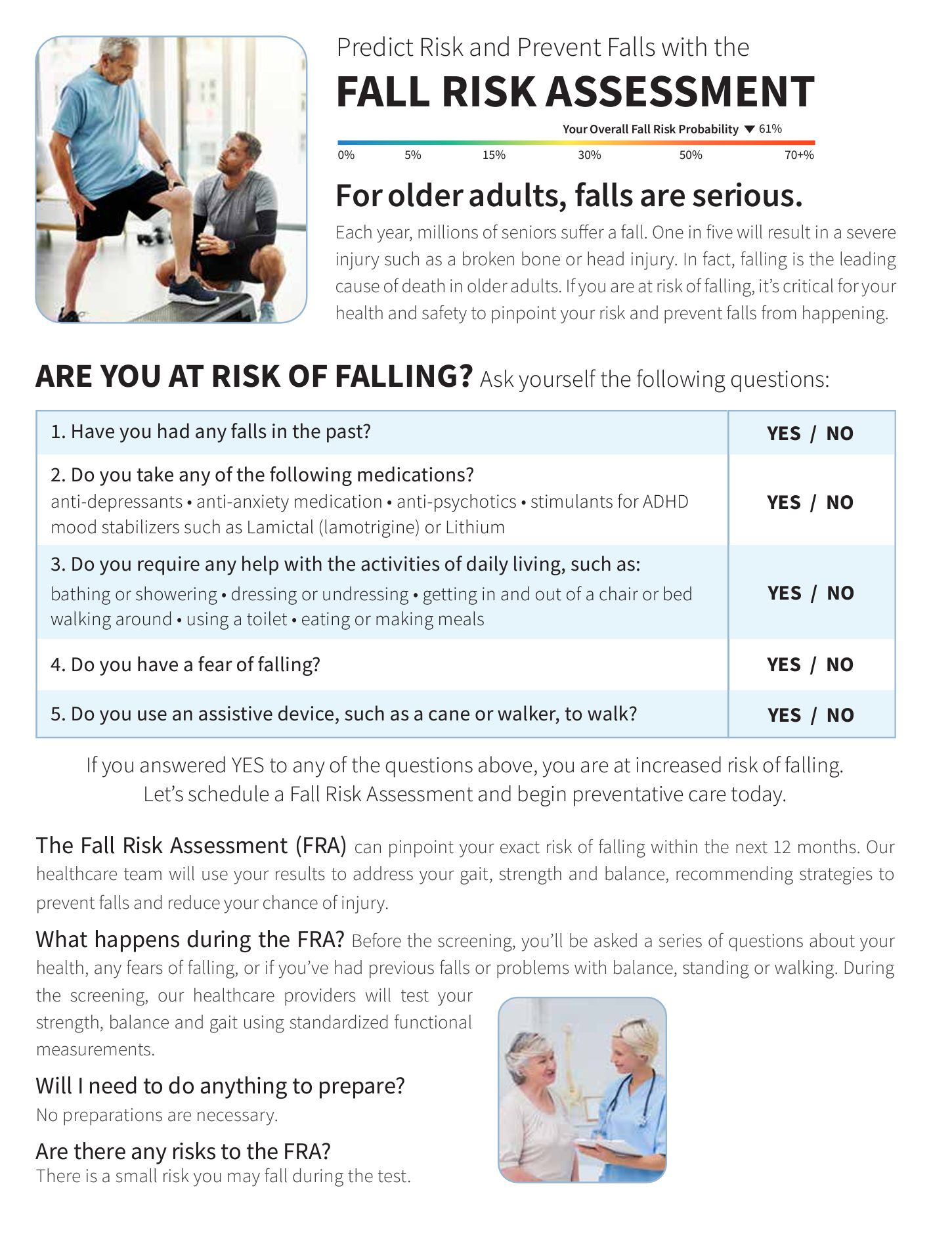10 Simple Techniques For Dementia Fall Risk
Table of ContentsThe Basic Principles Of Dementia Fall Risk The Of Dementia Fall RiskThe Best Guide To Dementia Fall RiskThe 5-Second Trick For Dementia Fall RiskThe Greatest Guide To Dementia Fall Risk
Based on signs and signs and symptoms, such as evidence of head injury or a brand-new focal neurologic shortage, calculated tomography or MRI of the brain might be indicated. An evaluation for reasons of syncope ought to be conducted only if there is solid suspicion, as in the instance of recurrent, inexplicable drops
Healthcare carriers make use of an autumn danger assessment to identify your danger variables for falling and make helpful recommendations. A fall threat assessment is important since understanding which elements increase your chances of dropping assists you: Minimize your risk of dropping or harming yourself.
Maximize your capability to relocate and be active. Keep a healthy, independent life. All adults 65 years and older ought to have a first fall danger testing. Your healthcare copyright might ask you whether you: Feel unstable when standing or walking. Have fallen in the previous year. Fret about falling. If you answer yes to any one of these inquiries, your doctor will advise an additional, a lot more thorough assessment.
How Dementia Fall Risk can Save You Time, Stress, and Money.

, and goals especially customized to individuals who are at threat for falls. A is specified as an event that results in an individual coming to relax accidentally on the ground or flooring or other reduced level (WHO, 2021).
According to the Centers for Disease Control and Avoidance (CDC),, creating over 34,000 deaths for that age team. Dropping is the second leading cause of death from unintentional site injuries around the world. Fatality from drops is a significant and native to the island issue amongst older individuals. It is approximated that loss death prices in the united state

Each year, over 800,000 patients are hospitalized since of falls. Registered nurses play a significant function in stopping drops for their clients with education, reviewing fall threat, producing much safer environments, and supplying interventions in protecting against injuries from drops.
Autumns are due to a number of elements, and an all natural method to the specific and setting is important. Mean a person is taken into consideration at high threat for drops after the screening.
Little Known Facts About Dementia Fall Risk.
A requires utilizing a confirmed device that researchers have actually taken a look at to be helpful in naming the causes of drops in an individual. The degree of autumn danger can be figured out making use of the analysis of innate and external variables.
Individuals are a lot more likely to fall once again if they have actually maintained one or more falls in the past six months. The older populace is at enhanced danger of fall-related readmissions based on a research study identifying the variables anticipating of repeat drops linked end results (Prabhakaran et al., 2020).
In addition, confusion and damaged judgment increase the client's chance of dropping. The capacity of individuals to shield themselves from drops is affected by visit the site such aspects as age and development. Older people with weak muscle mass are most likely to fall than those that preserve muscular tissue strength, flexibility, and endurance. These modifications include lowered aesthetic function, damaged color understanding, adjustment in facility of gravity, unstable stride, decreased muscle toughness, decreased endurance, altered deepness assumption, and delayed response and reaction times.
Little Known Facts About Dementia Fall Risk.
Less contrast sensitivity was rather related to both increased rates of drops and other injuries, while lowered visual skill was just associated with raised fall rate (Wood et al., 2011). Sensory assumption of ecological stimulations is critical to safety. Vision and listening to impairment limitation the client's capability reference to regard threats in the surroundings.
Older grownups who have poor balance or problem walking are more probable to fall. These problems might be connected with lack of exercise or a neurological cause, arthritis, or other clinical conditions and therapies. A crucial threat factor highlighted in a research is that adults with rheumatoid arthritis are at high threat of falls, consisting of puffy and tender reduced extremity joints, exhaustion, and use of psychotropic drugs (Stanmore et al., 2013).